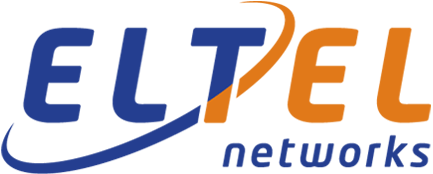
Tesla or Edison? Alternating current or direct current? In the 19th century, this competition was won by Tesla and his method of generating and transmitting power. Alternating current (AC) has reigned supreme in the world of power generation to this day, but high-voltage direct current (DC) lines and HVDC technology have been gaining in popularity for some time now. What are the pros and cons of such power transmission?
HVDC (High Voltage Direct Current) is not new. DC transmission technology has been developed and refined since the first half of the 20th century, but now - especially in the face of the energy transition - it is becoming increasingly important. In many situations, it is the optimal solution to meet today's needs for transporting large amounts of energy over long distances, integrating renewable energy sources or connecting power systems with different parameters.
The advantages of HVDC - when it makes sense to go for direct current in a high-voltage network
HVDC systems are used in areas where power is transmitted over very long distances or to take power from offshore wind farms. The main advantage of HVDC is that it solves the problem of reactive power consumption for line charging, which occurs particularly on cable lines HVAC. The main advantages of the HVDC system include:
- interconnection of energy systems - is one of the most important reasons for using HVDC. HVDC systems connect continental areas with island areas (such as the UK with Europe), as well as providing the opportunity to connect different electricity systems and areas that are separated by a large water area. They are also used in connecting power systems where there are different frequencies or problems with maintaining the frequency;
- lower power losses during long-distance transmission of electricity - in the HVDC system there is no problem with reactive power in transmission lines, which in the HVAC technology limits the power transmission capacity. More power can be transmitted cost-effectively over longer distances compared to AC high-voltage lines;
- building energy networks through maritime areas - currently this is the only system used to connect countries that are separated by a significant water area;
- power output from renewable electricity generation areas – this is a major advantage of HVDC, where this technology is used in offshore areas.
HVDC constraints, or why there are still so few direct current (DC) transmission lines
Unfortunately, in addition to its many advantages, DC transmission technology also has its limitations:
- high cost - HVDC is a complex and therefore expensive solution. Expenditure on building HVDC stations is several times higher than expenditure on building HVAC stations. It is therefore not worth using this technology to transmit energy over short distances;
- complexity of converting electricity and operating HVDC stations - is also some limitation for HVDC.

HVDC station in Wilster (Germany), materials: Eltel Networks Energetyka SA
HVDC - projects, implementations, companies...
In Poland, experience with HVDC facilities includes Eltel Networks Energetyka SA. Specialists, engineers and technicians of Eltel Networks Energetyka SA carried out assembly, control-measurement, commissioning and engineering supervision works on LitPol Link and NordLink projects, thus they are well acquainted with the organisational structure of primary and secondary circuits as well as automation systems and auxiliary equipment. Their many years of experience and knowledge gained on HVDC projects guarantee professional engineering and technical support for the investor at every stage of the investment.
In Poland, at the current stage of investment in the national energy system, there is no project based on HVDC technology, but consultations are currently under way on the project Harmony Link 2. The aim of this investment is to build an undersea line in High Voltage Direct Current technology, connecting Poland and Lithuania. The investors are the national transmission system operators - Polskie Sieci Elektroenergetyczne SA and Litgrid AB. This is a strategic undertaking to preserve the energy security of Central and Eastern Europe and to facilitate international exchanges of electricity.
***
To sum up... This is only the beginning, but the dynamic development of RES and the need to expand energy cross-border connections to strengthen energy security in the world will probably result in HVDC systems forming a powerful DC grid in some time. This is the future of efficient and smart electricity grids.
See also: Designing overhead lines - step-by-step process
Author: Wojciech Kuraszkiewicz
